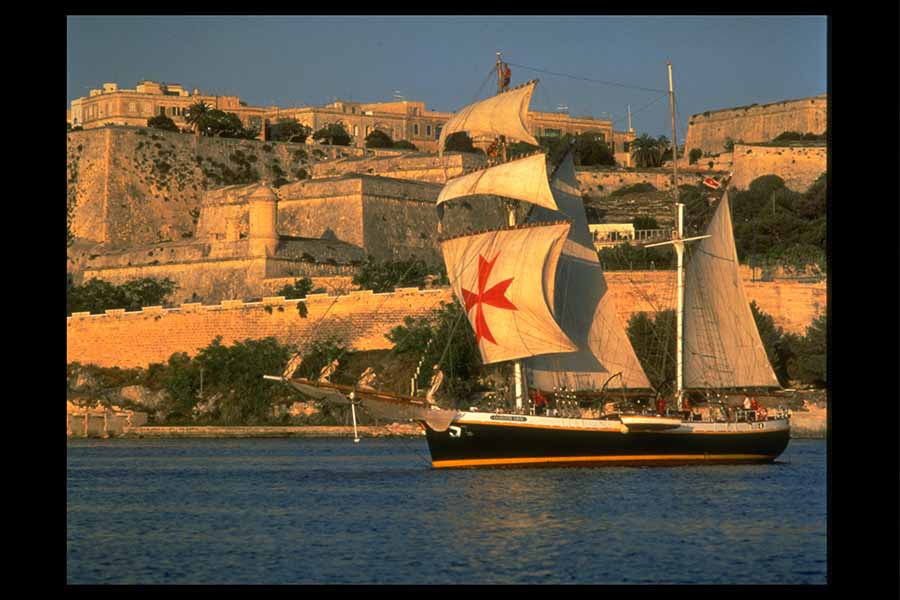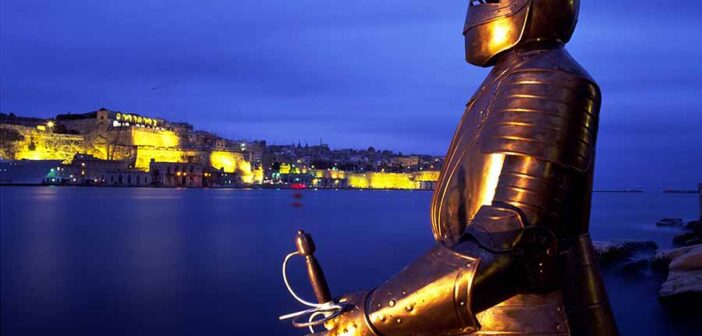
Malta, a Mediterranean archipelago comprising three main islands—Malta, Gozo, and Comino—is a treasure trove for history tourists, boasting over 7,000 years of heritage from Neolithic temples to Baroque fortresses.
A bus stop in the Meditteranean, its strategic location has shaped a rich history under Phoenicians, Romans, Knights of St. John, and British rule, earning it the nickname “an open-air museum.”
In 2025, history tourists can expect immersive experiences at UNESCO World Heritage Sites, fortified cities, and museums, enhanced by new interpretive programs and sustainable tourism initiatives.
History tourists in Malta will encounter a dense concentration of archaeological sites, medieval architecture, and WWII relics, all set against a backdrop of Mediterranean beauty:
- Valletta, the Capital: A UNESCO World Heritage Site, Valletta is a 16th-century fortified city built by the Knights of St. John. St. John’s Co-Cathedral, with its ornate Baroque interiors and Caravaggio’s The Beheading of St. John (1608), is a must-see, drawing art and history enthusiasts. The Grand Master’s Palace, housing the Armoury with 5,000+ artifacts, showcases the Knights’ legacy. Fort St. Elmo and the National War Museum highlight Malta’s WWII “Siege of 1940–1943,” with exhibits on the George Cross awarded to the island.
- Mdina, the Silent City: Known as Malta’s medieval capital (13 km from Valletta), Mdina’s walled streets feature St. Paul’s Cathedral, with its 17th-century frescoes, and the Mdina Dungeons, depicting the city’s darker history. Bastion Square offers panoramic views, connecting visitors to its Norman and Arab past.
- Ġgantija Temples (Gozo): These 5,500-year-old Neolithic temples, a UNESCO World Heritage Site, predate Stonehenge and the Pyramids. Built by a prehistoric culture, they feature massive limestone blocks and a museum with artifacts like fertility figurines, offering insights into Malta’s ancient rituals.
- Ħal-Saflieni Hypogeum (Paola): A UNESCO World Heritage Site, this underground necropolis (3600–2500 BCE) is a marvel of prehistoric engineering, with rock-cut chambers and red ochre paintings. Limited to 80 visitors daily (10 per tour), it requires booking 2–3 months in advance, ensuring an intimate experience.
- Ħaġar Qim and Mnajdra Temples (Qrendi): These 3600–3200 BCE megalithic temples, also UNESCO-listed, overlook the sea, with Mnajdra’s solar-aligned doorways showcasing ancient astronomical knowledge. A visitor center with 3D models enhances understanding.
- Three Cities (Birgu, Senglea, Cospicua): These fortified harbors, built by the Knights, feature the Inquisitor’s Palace in Birgu, with its 16th-century courtrooms, and Fort St. Angelo, a medieval stronghold. The Malta Maritime Museum in Birgu traces 3,000 years of seafaring history.
- Rabat and St. Paul’s Catacombs: Rabat’s 4th–9th-century catacombs, used by early Christians, offer underground tours of 2,000+ tombs. Nearby, the Domus Romana museum displays Roman mosaics from a 1st-century BCE villa.
- Gozo’s Cittadella (Victoria): This fortified hilltop, dating to the Bronze Age, includes a 17th-century cathedral and museums on Gozo’s folklore and archaeology. Its ramparts offer island-wide views.
- WWII Sites: The Lascaris War Rooms in Valletta, a secret underground bunker, reveal Malta’s role as a WWII Allied base. The Malta at War Museum in Birgu recreates air-raid shelters, immersing visitors in the island’s wartime resilience.
Cultural and Immersive Experiences:
- Guided Tours: Operators like Malta Uncovered offer half-day (€30–€50) and full-day (€60–€80) tours, blending Valletta’s Baroque sites with Mdina’s medieval charm or Gozo’s temples. Private tours, like those via Viator, include skip-the-line access to the Hypogeum or St. John’s Co-Cathedral.
- Reenactments and Festivals: The “In Guardia” reenactments at Fort St. Elmo (weekends, €8) recreate 16th-century Knights’ drills. Village festas (May–September) celebrate patron saints with processions and fireworks, reflecting Malta’s 90% Catholic heritage. The Valletta Baroque Festival (January) stages operas in historic venues like the Manoel Theatre, Europe’s third-oldest working theater (1732).
- Museums: The National Museum of Archaeology in Valletta displays Neolithic artifacts, including the “Sleeping Lady” from Ħaġar Qim. The Għarb Folklore Museum on Gozo showcases rural life through 28 themed rooms.
Practical Details:
- Accessibility: Malta’s compact size makes historical sites easily reachable. Valletta’s sites are walkable, with electric mini-cabs for mobility-impaired visitors. Buses (€2–€2.50, €21 weekly pass) connect Mdina, Rabat, and Qrendi. Ferries to Gozo (€5–€10 round-trip, 20 minutes) depart from Ċirkewwa. Car rentals (€20–€40/day) aid rural site visits but require an International Driving Permit for non-EU visitors.
- Climate: Spring (April–June) and autumn (September–October) offer 20–25°C weather, ideal for exploring outdoor sites like Ħaġar Qim. Summer (July–August) is hot (30°C), best for indoor museums. Winter (January–February) is mild (13–16°C), with quieter sites.
- Language and Costs: English and Maltese are official languages, ensuring easy communication. Entry fees range from €5 (Cittadella museums) to €15 (Hypogeum). The Malta Pass (€50–€100 for 1–3 days) covers 30+ sites, saving 50% on multi-attraction visits.
- Visitor Experience: Expect crowds at Valletta and Mdina in summer, with quieter visits in winter. Guided tours or audio guides (available at major sites) enhance understanding, as signage can be minimal. Malta’s safety (night walking safety index: 66.14) ensures worry-free exploration.
Best-Known Facilities for History Tourists:
- Malta Pass: Offers free entry to over 30 sites, including St. John’s Co-Cathedral (€15), Ħaġar Qim (€10), and Fort St. Elmo (€10), with discounts on guided tours. Available for 1, 2, or 3 days, delivered to hotels.
- Visitor Centers: The Valletta Visitor Centre (near St. John’s Co-Cathedral, €5) provides maps, audio guides, and 3D exhibits on the Knights. Gozo’s Cittadella Visitor Centre (€5, includes museums) details Neolithic and medieval history. The Ħaġar Qim Visitor Centre (€10, includes temples) offers interactive displays.
- Guided Tour Operators: Malta Uncovered, Colour My Travel, and Viator offer tailored history tours, from Valletta’s Baroque sites (€30–€50) to Gozo’s temples (€60–€80). Private tours include skip-the-line access and transport.
- Public Transport (Tallinja): Buses (€21 weekly Explore ticket) connect Valletta (bus 50 to Mdina), Qrendi (bus 72 to Ħaġar Qim), and Ċirkewwa for Gozo ferries. The Tallinja app provides real-time schedules.
- Museums and Audio Guides: The National Museum of Archaeology (€5) and National War Museum (€10) offer audio guides in English, French, and Italian. The Hypogeum and Ġgantija provide guided tours only, ensuring preservation.
- Rest Areas and Amenities: Valletta’s City Market and Mdina’s cafes (e.g., Fontanella Tea Garden) offer pastizzi (€0.30–€0.50) and ftira (€2–€5) near sites. Toilets and benches are available at major attractions, but rural sites like Mnajdra have limited facilities.
What’s New for History Tourists in 2025
- Malta’s tourism authority is enhancing historical experiences to attract high-spending cultural tourists and manage overtourism, aligning with sustainable development goals (SDG 12). Here are the key updates for 2025:
- Ħaġar Qim and Mnajdra: A 2025 initiative introduces augmented reality (AR) tours at these temples, using tablets to visualize Neolithic life. New evening tours (limited to 20 visitors, €20) showcase Mnajdra’s solstice alignments, launched to reduce daytime crowds.
- Ġgantija Temples: Gozo’s temples gain updated museum exhibits with 3D reconstructions of prehistoric rituals, enhancing visitor understanding. A new audio guide in six languages (English, Maltese, French, Italian, German, Spanish) improves accessibility.
- The Domus Romana in Rabat, a 1st-century BCE villa with rare mosaics, reopens in spring 2025 after restoration. New interpretive panels and a digital tour app highlight its role as a Roman trade hub, complementing nearby St. Paul’s Catacombs. This lesser-known site offers a quieter alternative to Valletta, appealing to history buffs seeking Roman history.
- Heritage Malta’s Digital Guides: In 2025, Heritage Malta launches a free app with virtual tours of Fort St. Angelo, the Inquisitor’s Palace, and the Hypogeum, reducing physical strain on sites. QR codes at entrances provide historical context, encouraging off-peak visits.
- Gozo’s Cittadella Night Tours: New evening tours (€15, limited to 15 visitors) explore the Cittadella’s Bronze Age origins and medieval fortifications, easing daytime congestion. These initiatives promote sustainable exploration, preserving Malta’s heritage while enhancing visitor experiences.
- Malta Pass Enhancements: The 2025 Malta Pass (€50–€100 for 1–3 days) now includes skip-the-line access to St. John’s Co-Cathedral and Fort St. Elmo, plus discounts on history-focused tours (e.g., Three Cities, €30). Hotel delivery and a 50% discount make it cost-effective. History tourists can maximize site visits, saving time and money on crowded attractions.
Practical Tips for History Tourists
- When to Visit: Spring (April–June) and autumn (September–October) offer 20–25°C weather, ideal for outdoor sites like Ħaġar Qim. Summer (July–August) is hot (30°C), best for indoor museums like the National Museum of Archaeology. Winter (January–February) is mild (13–16°C), with quieter sites and events like the Baroque Festival.
- Getting Around: Buses (€2–€2.50, €21 weekly pass) connect Valletta (bus 50 to Mdina), Qrendi (bus 72 to Ħaġar Qim), and Ċirkewwa for Gozo ferries. The Tallinja app aids planning. Ferries to Gozo (€5–€10, 20 minutes) are frequent. Rent a car (€20–€40/day) for rural sites, but parking is limited in Valletta.
- Accommodations: Stay in Valletta (€80–€150/night, e.g., Palazzo Consiglia) for site proximity, Sliema (€50–€100) for budget options, or Gozo’s Victoria (€40–€80) for rural history. Book early for summer; winter offers deals.
- Reservations: Book Hypogeum tickets (€15, www.heritagemalta.mt) 2–3 months ahead. Guided tours and Malta Pass bookings via www.visitmalta.com ensure skip-the-line access. Reserve evening tours (Ħaġar Qim, Cittadella) early due to limited spots.
- Etiquette: Respect Catholic sites (e.g., modest dress in St. John’s Co-Cathedral). Avoid touching artifacts or climbing temple stones. Tip guides 5–10% for personalized tours.
- Safety: Malta is safe (night walking safety index: 66.14), but beware pickpocketing in Valletta. Dial 112 for emergencies. Carry water and sun protection for outdoor sites.
- Resources: Visitmalta.com offers the 2025 Malta Travel Guide, site maps, and event calendars. Heritagemalta.mt details ticket prices and AR tours. Tripadvisor reviews guide tour operator choices.
Malta’s historical tourism thrives on its unparalleled density of sites—Neolithic temples, Roman villas, and Baroque fortresses—making it a global leader for history enthusiasts. The 2025 updates, like AR tours and Rabat’s Roman Villa, enhance accessibility and engagement. History tourists should book early, explore off-peak seasons, and visit rural sites to support local economies and reduce congestion. Respecting preservation rules, such as not touching temple stones, ensures Malta’s heritage endures.
- Aer Lingus and Ryanair both fly direct from Dublin to Malta. Ryanair also flies from Belfast and Shannon while Jet2 flies from Belfast. Visitmalta.com offers trail maps and event updates.




